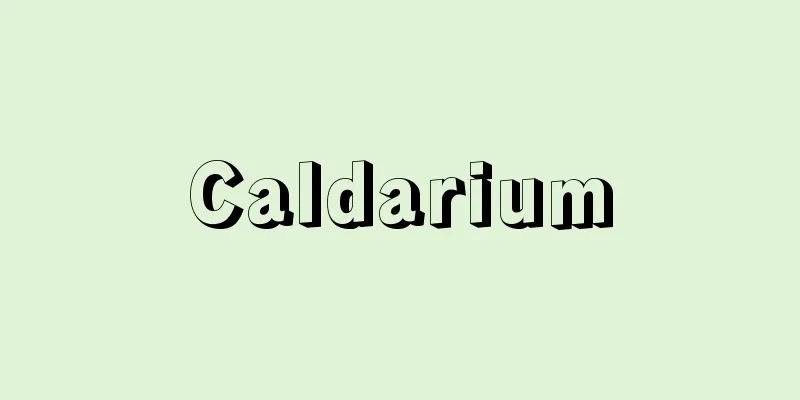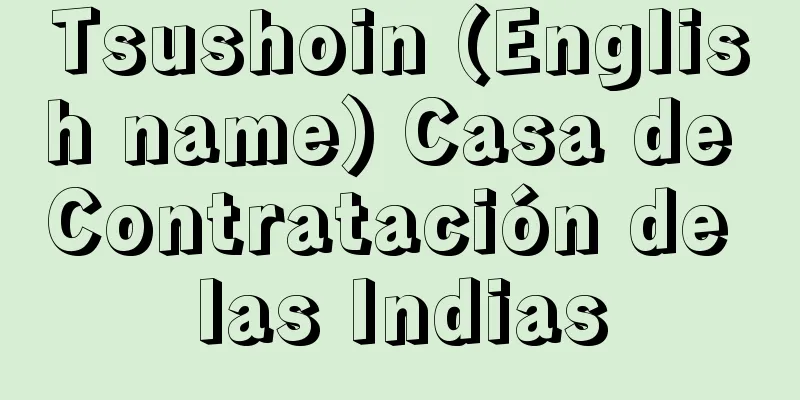Spirogyra - Blue green

|
A general term for the genus Spirogyra, a group of freshwater algae in the family Zygophyceae, a group of green algae. They form bright green, unbranched, hair-like, long, thin filaments. They vary in length, from around 30 centimeters to over 2 meters. The filamentous algae become tangled and grow in clusters in the water, like disheveled hair or vines. It is said that the "midoro" in Spirogyra is a transformation of the disheveled, tangled state of hair. Under a microscope, they look like a long, thin green ribbon, with cylindrical cells with chloroplasts that are wound in a spiral shape lined up vertically. In reality, they are single-celled algae in which each individual cylindrical cell lives independently, and the filamentous colony formed by these cells lined up vertically appears as a single organism. It grows profusely in rivers, lakes, fishponds, garden ponds, and flooded rice fields from early spring to summer, scattering green lint all over the water surface. When it grows profusely in fishponds, especially in ponds for young fish, it hinders the movement and feeding of fish, and in flooded rice fields, it blocks sunlight from penetrating the soil, hindering rice growth, so fish farmers and farmers dislike its proliferation. Various herbicides that are effective against weeds of higher plants are not very effective against algae, and no strong algaecides have been found so far. Also, if algae-killing treatment is performed when Spirogyra is small and juvenile, it can achieve a certain degree of purpose, but once it grows large and flourishes, it is a single-celled algae with individual cells living independently, so it has an extremely strong regenerative ability and is difficult to remove as desired. In addition, Zygnema and Mougeotia are very similar in appearance, growth period, and habitat to Spirogyra. They can be distinguished under a microscope by the following differences: (1) Spirogyra has long, spirally coiled chloroplasts containing numerous tiny pyrenoids scattered in a star-shaped pattern. (2) Zygoscelis has one plate-shaped chloroplast containing one or two star-shaped pyrenoids. (3) The chloroplast of the Japanese quince has a single plate-shaped chloroplast with numerous pyrenoids scattered within it. In rare cases, these algae will have two body filaments that come into contact side by side, with horizontal connecting filaments emerging between them to form a ladder shape, and the contents of one of the body cells will move to the opposing one and combine with the contents. This is a type of sexual reproduction, and the product of the combination of the contents of both cells is called a zygote. Because this process of sexual reproduction is a distinctive feature, there was a time when they were given the special name of zygophyte algae. The two genera Spirogyra and Zygophyta that form a ladder shape with horizontal connecting filaments, while in the genus Anemone, opposing cells bend towards each other to join and a zygote is formed at the junction. [Moriaki Shinzaki] Green filamentous algae grow and form colonies. © Underwater Fort Enterprise, Isamu Soyama "> Spirogyra Source: Shogakukan Encyclopedia Nipponica About Encyclopedia Nipponica Information | Legend |
|
緑藻植物、ホシミドロ科淡水藻の一群であるアオミドロ属の総称。鮮緑色、無分岐で、毛髪形の細長い糸状体をなす。長さは30センチメートル内外から2メートルを超すものもあるなど、変化が多い。糸状の藻は、個々にもつれあい、乱れ髪状やつる草状となって水中に叢生(そうせい)する。髪をおどろに振り乱した状態から転化したのがアオミドロの「ミドロ」だといわれる。顕微鏡で見ると、螺旋(らせん)形に巻いたような形状の葉緑体をもつ筒型細胞が一列に縦に並び、細長い緑色のリボンのように見える。本来は、個々の筒型細胞が独立生活を営む単細胞藻で、それらが縦に多数並んでつくる糸状群体が、一個体のように見えるだけである。河川や湖沼、養魚池や家庭の園池、また水を張った稲田などに春先から夏にかけて繁茂し、緑色の糸くずを水面いっぱいにまき散らした様相を呈する。養魚池、とくに幼魚池などで繁茂すると、魚体の運動や摂餌(せつじ)行動を妨げ、水を張った稲田の場合では、太陽光の土中への入射をじゃまして稲の生育を阻害するなどのことがあるため、養魚家や農家はその繁殖を嫌う。高等植物の雑草に対しては効果的な威力を示す諸種の除草剤も、藻に対してはあまり効力がなく、いまのところ強力な除藻剤がみつかっていない。またアオミドロが小さい幼体期に除藻処置を行えば、ある程度の目的は達せられるが、大きく繁茂してからでは、個々の細胞が独立生活をしている単細胞藻であるため、再生力がきわめて強く、除藻は思うにまかせない。 なお、アオミドロと外見、生育期、生育場ともよく似ているものにホシミドロZygnemaやヒザオリMougeotiaがある。これらは顕微鏡下では次のような相違で区別される。 (1)アオミドロは螺旋形に巻く細長い葉緑体、その中に微小なピレノイドが星状に数多く散らばる。 (2)ホシミドロは1枚の板状葉緑体、その中に1~2個の星形ピレノイドをもつ。 (3)ヒザオリは1枚の板状葉緑体、その中にピレノイドが数多く散らばる。 なお、これらの藻類は、まれに、2本の体糸が並んで接し合い、互いの間に横の連絡糸が出て梯子(はしご)形になり、どちらか一方の体細胞の内容が相対する他の一方に移動して内容どうしが結合するという現象がみられる。これは一種の有性生殖で、両細胞の内容が結合してできあがったものを接合子という。このような過程で有性生殖が行われるのは、きわだった特徴であるため、かつては接合藻類の名で特別扱いされた時代もあった。横の連絡糸ができて梯子形になるのはアオミドロとホシミドロの2属で、ヒザオリ属では、相対する細胞どうしが互いに折れ曲がって相接し、接合部に接合子がつくられる。 [新崎盛敏] 緑色を呈した糸状の藻が繁茂して群体となる©水中フォート・エンタープライズ 楚山いさむ"> アオミドロ 出典 小学館 日本大百科全書(ニッポニカ)日本大百科全書(ニッポニカ)について 情報 | 凡例 |
Recommend
Waterweed - Daytime mat
A floating perennial plant of the Potamogetonacea...
Oamu Story - Oamu Story
A story written in the mid-Edo period. 1 volume. ...
Acceptor
Something that accepts electrons from the valence...
Serrasalmus
…a freshwater fish native to South America. It is...
Agate - Ageto
⇒ agate Agate Source: About Shogakukan Digital Dai...
Riverbank
The former name of a town (Kawara-cho) in Yazu-gu...
Association Football - Asosie-shion Futboru
About soccer. Football Collection . Source: About ...
Yasutaka Okamoto
1797-1878 A Japanese classics scholar from the la...
Mago
...It was only under this political system that t...
strawberry tomato
… [Tetsuichi Yahara] [Horticultural species] In J...
deletion
… [Chromosomal Mutation] Originally, this term re...
Penni, GF (English spelling) PenniGF
… [The birth of Mannerism] Regarding the origins ...
Direct finance, indirect finance
In financial activities, which involve the lending...
Master of the Arts - Master of the Arts
...In other words, the chiefs of the Ritsuryo bur...
hortus deliciarum (English name) hortus deliciarum
...The basic structure of a Western garden, in wh...









